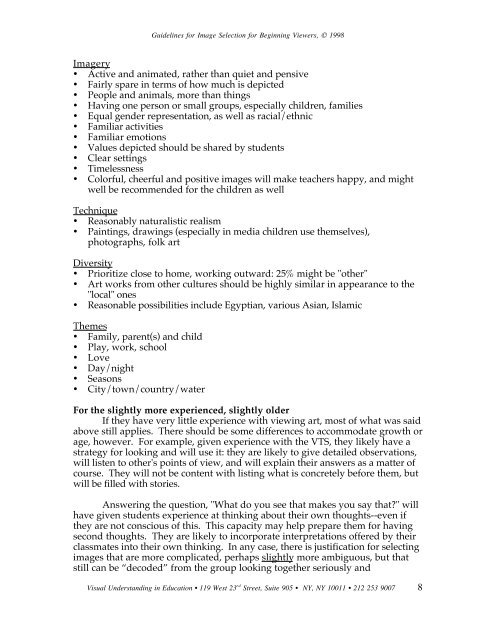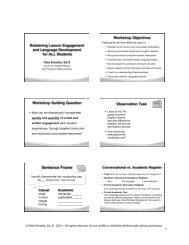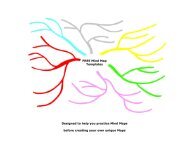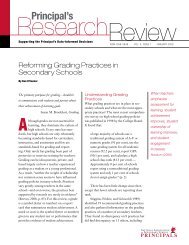Guidelines for Image Selection for Beginning Viewers - eStaffRoom
Guidelines for Image Selection for Beginning Viewers - eStaffRoom
Guidelines for Image Selection for Beginning Viewers - eStaffRoom
You also want an ePaper? Increase the reach of your titles
YUMPU automatically turns print PDFs into web optimized ePapers that Google loves.
<strong>Guidelines</strong> <strong>for</strong> <strong>Image</strong> <strong>Selection</strong> <strong>for</strong> <strong>Beginning</strong> <strong>Viewers</strong>, © 1998<br />
<strong>Image</strong>ry<br />
• Active and animated, rather than quiet and pensive<br />
• Fairly spare in terms of how much is depicted<br />
• People and animals, more than things<br />
• Having one person or small groups, especially children, families<br />
• Equal gender representation, as well as racial/ethnic<br />
• Familiar activities<br />
• Familiar emotions<br />
• Values depicted should be shared by students<br />
• Clear settings<br />
• Timelessness<br />
• Colorful, cheerful and positive images will make teachers happy, and might<br />
well be recommended <strong>for</strong> the children as well<br />
Technique<br />
• Reasonably naturalistic realism<br />
• Paintings, drawings (especially in media children use themselves),<br />
photographs, folk art<br />
Diversity<br />
• Prioritize close to home, working outward: 25% might be "other"<br />
• Art works from other cultures should be highly similar in appearance to the<br />
"local" ones<br />
• Reasonable possibilities include Egyptian, various Asian, Islamic<br />
Themes<br />
• Family, parent(s) and child<br />
• Play, work, school<br />
• Love<br />
• Day/night<br />
• Seasons<br />
• City/town/country/water<br />
For the slightly more experienced, slightly older<br />
If they have very little experience with viewing art, most of what was said<br />
above still applies. There should be some differences to accommodate growth or<br />
age, however. For example, given experience with the VTS, they likely have a<br />
strategy <strong>for</strong> looking and will use it: they are likely to give detailed observations,<br />
will listen to other's points of view, and will explain their answers as a matter of<br />
course. They will not be content with listing what is concretely be<strong>for</strong>e them, but<br />
will be filled with stories.<br />
Answering the question, "What do you see that makes you say that" will<br />
have given students experience at thinking about their own thoughts--even if<br />
they are not conscious of this. This capacity may help prepare them <strong>for</strong> having<br />
second thoughts. They are likely to incorporate interpretations offered by their<br />
classmates into their own thinking. In any case, there is justification <strong>for</strong> selecting<br />
images that are more complicated, perhaps slightly more ambiguous, but that<br />
still can be “decoded” from the group looking together seriously and<br />
Visual Understanding in Education • 119 West 23 rd Street, Suite 905 • NY, NY 10011 • 212 253 9007 8






